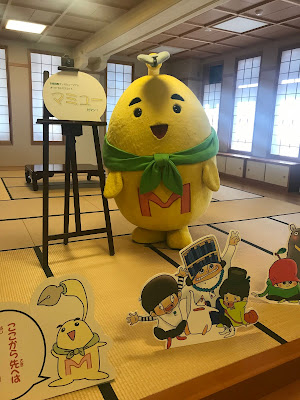Between The Lines: Bruce Mutard Profile
As the first volume of his epic graphic novel is released, writer/illustrator Bruce Mutard reflects on how much of contemporary Australia
 These are big questions – surely too much for the humble comic book of superheroes? “Anyone who’s been doing graphic stories and had real ambition to take it into a real adult market has always had to confront that for a long time. You’ve just got to kick against the pricks in this regard. But you have to back it up with the actual material.”
These are big questions – surely too much for the humble comic book of superheroes? “Anyone who’s been doing graphic stories and had real ambition to take it into a real adult market has always had to confront that for a long time. You’ve just got to kick against the pricks in this regard. But you have to back it up with the actual material.”
When design-school dropout Bruce Mutard heard that his publisher wouldn’t be releasing his first comic, Street Smell, he didn’t give up. “I was naturally disappointed but self-publication was always an option,” Mutard says. “My dad helped me out as I didn’t have enough money but I just wanted to get it out there.”
Distributing it through the zine networks of the early 1990s, Mutard produced the comic for four years under his own steam, learning to write and draw as he went along. “I wanted to do it on my own terms. I wanted to tell the stories I wanted to tell. They weren’t commercial. They weren’t genre and couldn’t be easily pigeonholed so the perks of fame and fortune never came my way, but I doggedly stuck to my guns.”
With the release of his 250-page graphic novel, The Sacrifice, Mutard has both guns blazing. The first of three ambitious volumes, the book follows Robert Wells, a pacifist who finds himself gradually drawn into World War II. The book has already drawn comparisons with Art Spegelman’s three-book graphic novel, Maus, which scored the Pulitzer Prize in 1992 for it’s re-telling of Jewish experience during the same conflict.
The Sacrifice has a different tack. Set in 1930s Melbourne
“Contemporary incidents fade out of memory very quickly, but the deeper structural significance of some of these issues remain. So I thought perhaps if I use analogous situations… if I can just point to those situations and my overall point will be made in a much more subtle and hopefully more powerful way. That’s why I find the historical setting more beguiling.”
The Sacrifice points out that then-Prime Minister ‘Pig Iron Bob’ Menzies was notorious for sending iron ore to Japan Australia
 These are big questions – surely too much for the humble comic book of superheroes? “Anyone who’s been doing graphic stories and had real ambition to take it into a real adult market has always had to confront that for a long time. You’ve just got to kick against the pricks in this regard. But you have to back it up with the actual material.”
These are big questions – surely too much for the humble comic book of superheroes? “Anyone who’s been doing graphic stories and had real ambition to take it into a real adult market has always had to confront that for a long time. You’ve just got to kick against the pricks in this regard. But you have to back it up with the actual material.”Australian graphic novels like Nicki Greenberg’s adaptation of The Great Gatsby or Shaun Tan’s award-winning The Arrival have made inroads into an adult market. Mutard is optimistic about a mainstream readership. “If they’ve never read any graphic stories before they might struggle to pick up the rhythm, but we’re such a visual culture that virtually everyone has been exposed to sequential images via television or films. We all grow up as a child reading illustrated picture books where image and text are working alongside one another.”
Reading The Sacrifice is distinctly cinematic with plot developing in facial expressions and themes explored in action such as an old woman watering a dying tree. Tangled family ties and trouble relationships are all part of Mutard’s book that packs more than a political punch. “I used to do these rather polemical short stories where you really shout at people. You’re slamming your fist on the table and making these statements. That’s all very well, but it doesn’t endear you to a wider audience. People in general don’t like getting harangued.”
Mutard doesn’t seem the type to slam fists on tables. Although he illustrates his comics as well as writing he talks like an author, considering his words before he speaks and sometimes even editing them after he’s spoken. As a boy he “read Tintin, Asterix and Disney comics” but “never imagined I would actually do a comic. The medium was not something that inspired me to take it up.”
It wasn’t until he began studying fine art and design that he discovered the adult and alternative comics such as Maus or the work of Robert Crumb which bought him inspiration. “By seeing the range and diversity of the medium it became more attractive and I started to dabble in telling stories that way. I like to write but I also like to draw, so there was a natural synergy eventually.”
Stories attract Mutard to his projects. The Sacrifice was originally conceived as a single book, but the trilogy continues with The Fight and The Return because the narrative took over. “That was a bit of a surprise. It was never planned to be a three volume set. It was relatively late in the game that I realised that it was logical to take the story of Robert, to follow him in uniform, into the fighting scenario, then after that. How do you get out of uniform, if you’ve been a soldier? How do you come down from that completely alien lifestyle to ordinary life?” And it’s these human questions and stories that originally inspired Mutard to create graphic novels.
An edited version of this profile originally appeared in The Big Issue.





Comments
Post a Comment